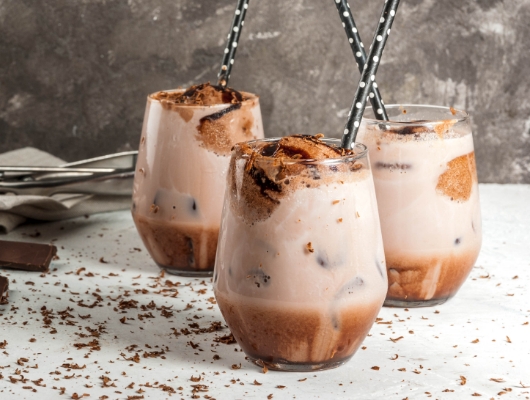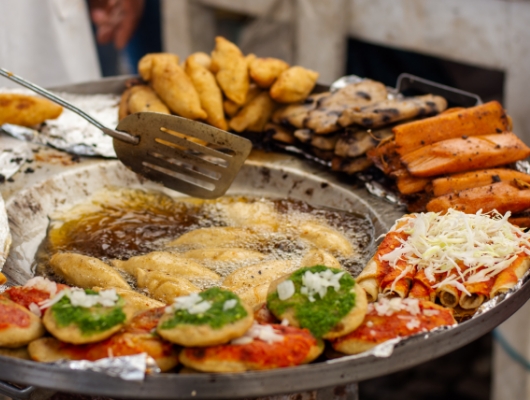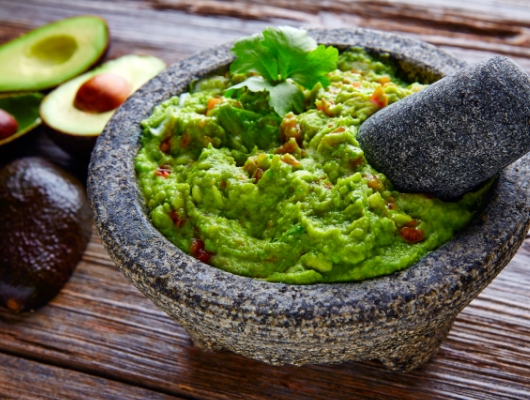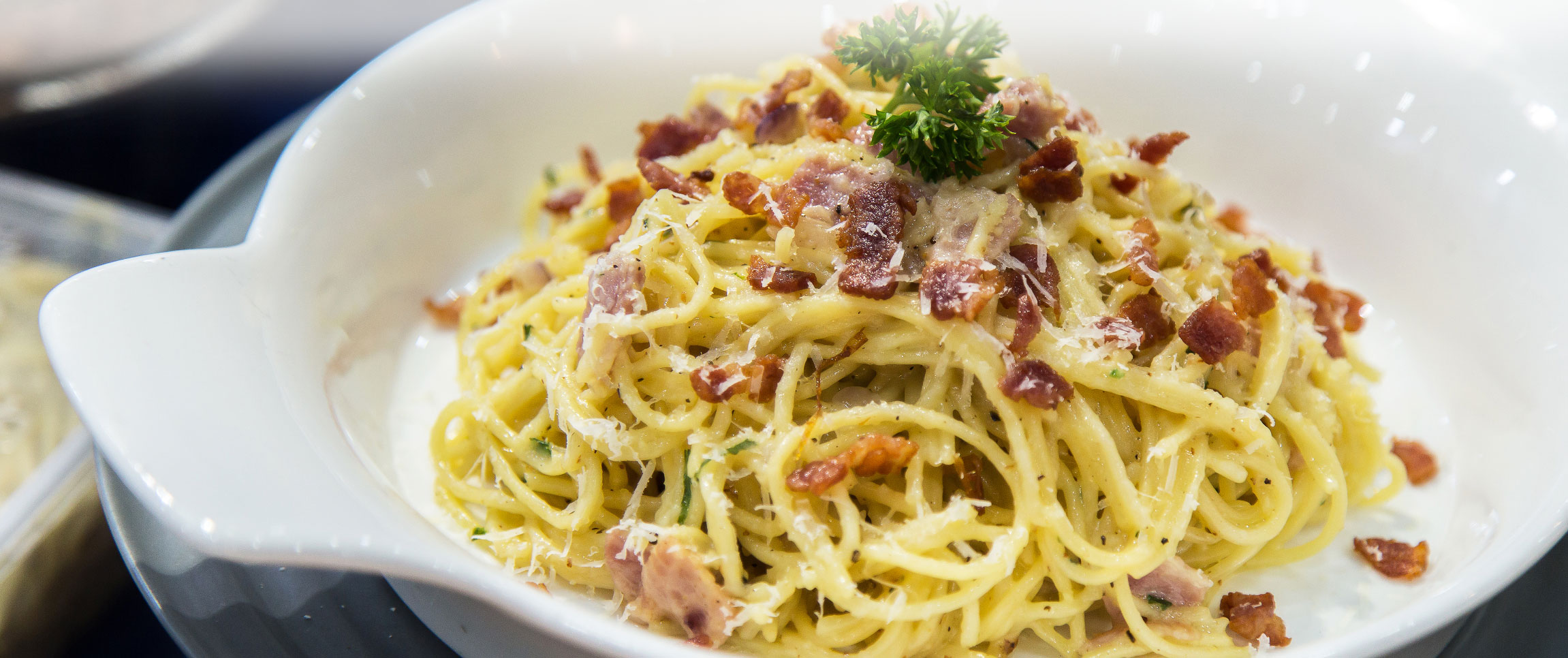Pasta dishes have long been found in places other than Italian restaurants. The problem, many of these pasta dishes mean overcooked spaghetti with a sauce that’s taste could be best described as “red.” Times have changed and consumers now demand something a little better.
Al dente is the buzz word and sauces aren’t there to drown the pasta, but rather to gently accentuate it either alone or as the backdrop for exciting and interesting fresh ingredients. It doesn’t hurt that, whether house-made or dry packaged, pasta is inexpensive and a boon to razor thin margins. So, if Italian isn’t your thing, how do you get a great pasta dish in front of your diners?
Master the Technique
The key, of course, to a great pasta dish is proper cooking. Salt the water, preferably with a clean sea salt with minimum additives, about a tablespoon per quart. Maintain the water at a rolling boil, if it has dropped in temperature from recently added pasta, let it return to a boil before adding more. No oil in the water and do not rinse. All that starch is pasta’s friend, rinsing removes it and oil masks it, causing the sauce not to adhere to the pasta. A small ladle of the pasta water, cloudy with starch and flavored with salt, can help with that adhesion and often provides just the right amount of seasoning.
To ensure the pasta is still al dente, especially if it’s to be tossed in sauce, undercook it by two to three minutes. The residual heat from the sauce will finish it off while the extra ladle of pasta water will keep the moisture content of the dish correct.
Choose the Right Type
The type of pasta you choose is also critical. Spaghetti doesn’t work for just every sauce/protein combination, either in taste and texture or visually. Pick the right tool for the right job. Or, in this case, the right pasta for the right sauce. Different shapes hold sauces of different density differently.Thinner sauces can coats strands nicely. Soupier, heavier sauces need shapes to help capture the flavor on the plate on its way to the mouth.
Pull Classic Inspiration
There is also something to be said for taking inspiration from classic dishes, especially those that have survived the test of time but might not be familiar to today’s diners. Take Cacio E Pepe, for example. Think of it as a mac-n-cheese for adults. Tagliolini or bucatini, tossed in butter with loads of fresh ground black pepper, add in grated Grana Padano and Piancone Pecorino, tossing until the cheese melts and the sauce thinly coats the pasta. If it’s looking a little too dry add a small ladle of the pasta water. This simple, minimalist dish, as a small plate or an entree, will appeal to everyone and get Instagrammed by all the food critics, professionals and Yelpers alike.
Another classic dish making a comeback is Bucatini all' Amatriciana, a mature elevation of spaghetti in red sauce. Dice pancetta and crisp up, add in chopped onion, garlic, and pepper flakes while continuing to sauté. Add in crushed, peeled Roma tomatoes and simmer. If you have extra time to reduce, a cup of red wine wouldn’t hurt. Don’t forget kosher salt and a very generous amount of freshly ground black pepper. At the end, stir in grated Piancone Pecorino Romano. Do not simply ladle this sauce in a pool on top of the pasta. By the time it gets to the table, the bucatini under the sauce will be overcooked and the pasta at the edges will be under done. Toss the pasta in the sauce to coat and serve it twirled high on to the plate, loads of flavor without being drowned in sauce.
The Amatriciana might also be a good candidate to roll out a meatball or two. Maybe a stunning massive one. Blending different amounts of beef, pork, and veal can get you started with your own special base, balancing flavors and fat content for your desired result. Fresh herbs with fine chopped onion and garlic, even spices like cayenne ground fennel all will help create an individually unique flavor for your house meatball. Just don’t forget some of the basics so you don’t end up with a dry lump. A well-made panade can help avoid that—basically a starch soaked in a liquid. Bread is commonly used, although you can also use crackers or panko. For a gluten-free meatball, make your panade with rice or potato—simply puree the cooked starches. For the liquid, anything from milk to stock, even buttermilk can work. Each combination adds its own flavor and effect on the texture.
Try New Ideas
Experimenting is key. Another moisture trick is to steal a page from the Chinese, their hot soup buns to be exact. Ever wonder how they get soup inside an uncooked pastry? Gelatinized soup broth. Take chicken or beef stock, heat, add in dissolved gelatin, pour into a dish and chill overnight. Keeping it cold, chop the Jell-O-like blocks into pieces about the size of BB’s. Mix into your meat mixture. During cooking, the stock will liquify and soak the meat with flavor and moisture.
You can even try and rehabilitate an old favorite that has fallen on hard times. Take Alfredo, the sauce that has a bad rap over the last few years, thought to be thick and gloppy, burying any protein and more associated with low quality chains than higher end eateries. That is actually a shame as a freshly made Alfredo using cream, butter, garlic and real cheese without any heavy flour or thickeners isn’t too difficult to make and will perfectly coat the pasta, adhering nicely on its own for a clean, modern dish that is very different than the labeled pool of sauce drowning the pasta in food nightmares. A little fresh chopped herb sprinkled atop the dish along with some beautifully browned West Creek® chicken or sautéed Bay Winds® shrimp helps reclaim this classic dish for modern tastes.
One thing you don’t want to do is ruin a classic. Customization is good, get creative. Just don’t cheapen the dish or its ingredients. Carbonara is another dish that has gone wrong of late. A good Carbonara is a beautiful thing—salty pancetta and pasta in a light sauce that is little more than egg and cheese. The bare simplicity screams for fresh ground black pepper. It goes off the rails when milk is used to stretch the sauce, ham replaces the pancetta, or a handful of frozen peas roll onto the scene. Suddenly, the dish transforms from high end to a cafeteria casserole. And nobody wants that.
Finally, when adding that pasta plate, don’t forget about all the diners who want pasta but are gluten free. Gluten-free pasta is out there, it’s better than it has ever been, but there are still challenges. Gluten-free flours don’t translate ounce for ounce and the higher starch content can lead to pots boiling over. Pre-cooked pastas like Roma® Gluten-Free Pasta can help avoid those pitfalls with exceptionally high quality and consistency. Even when using those, remember the extra starch content, make your sauce a little thinner and add more of it. It will coat the pasta and soak up the flavors much faster and in greater quantity than a regular pasta product. Don’t let it sit without a sauce or a drizzle of olive oil either to avoid it becoming a coagulated mess. Follow those steps and your pasta with the little GF next to it on the menu will be a contender for best seller with any of your other pasta dishes.



